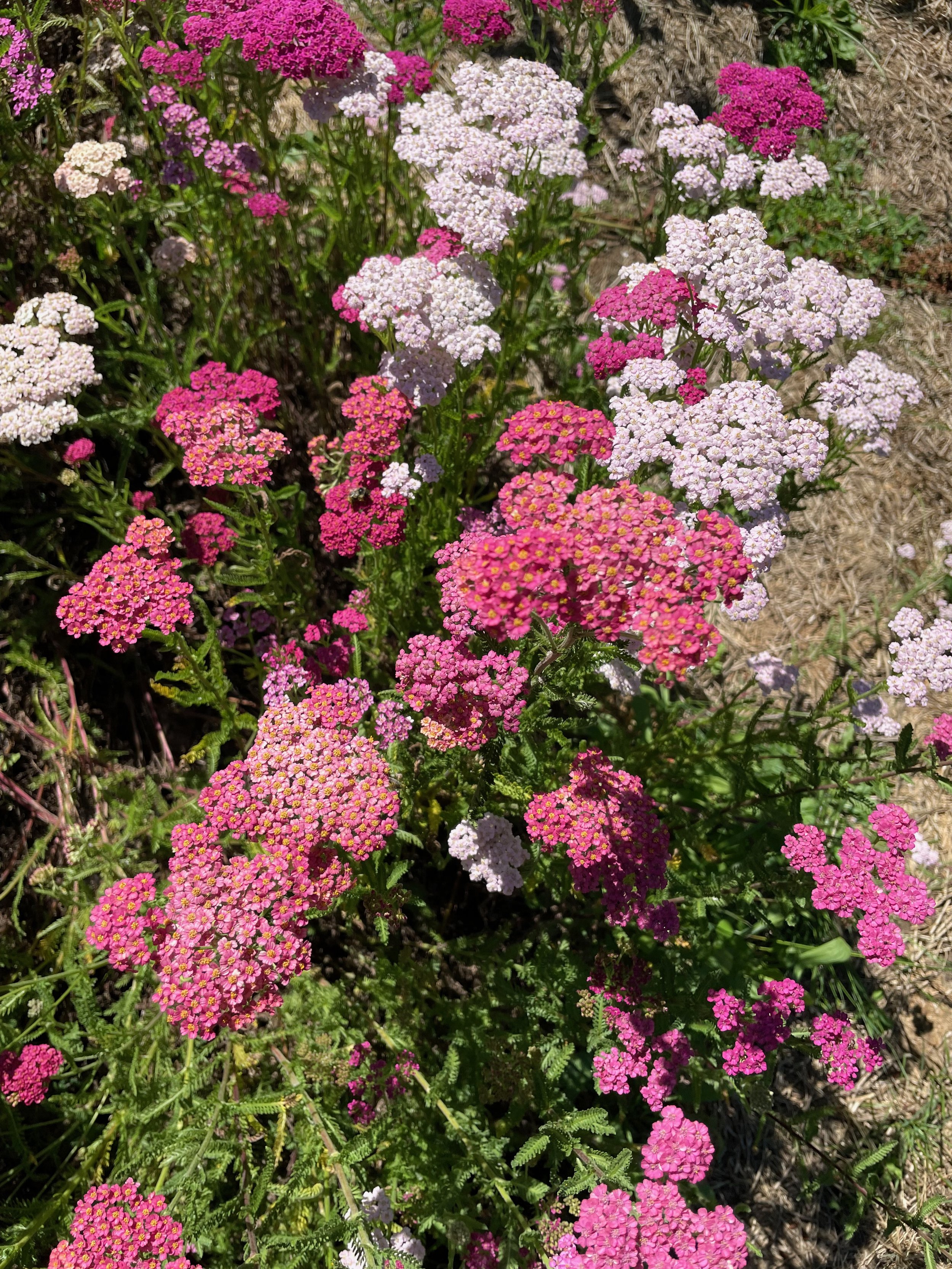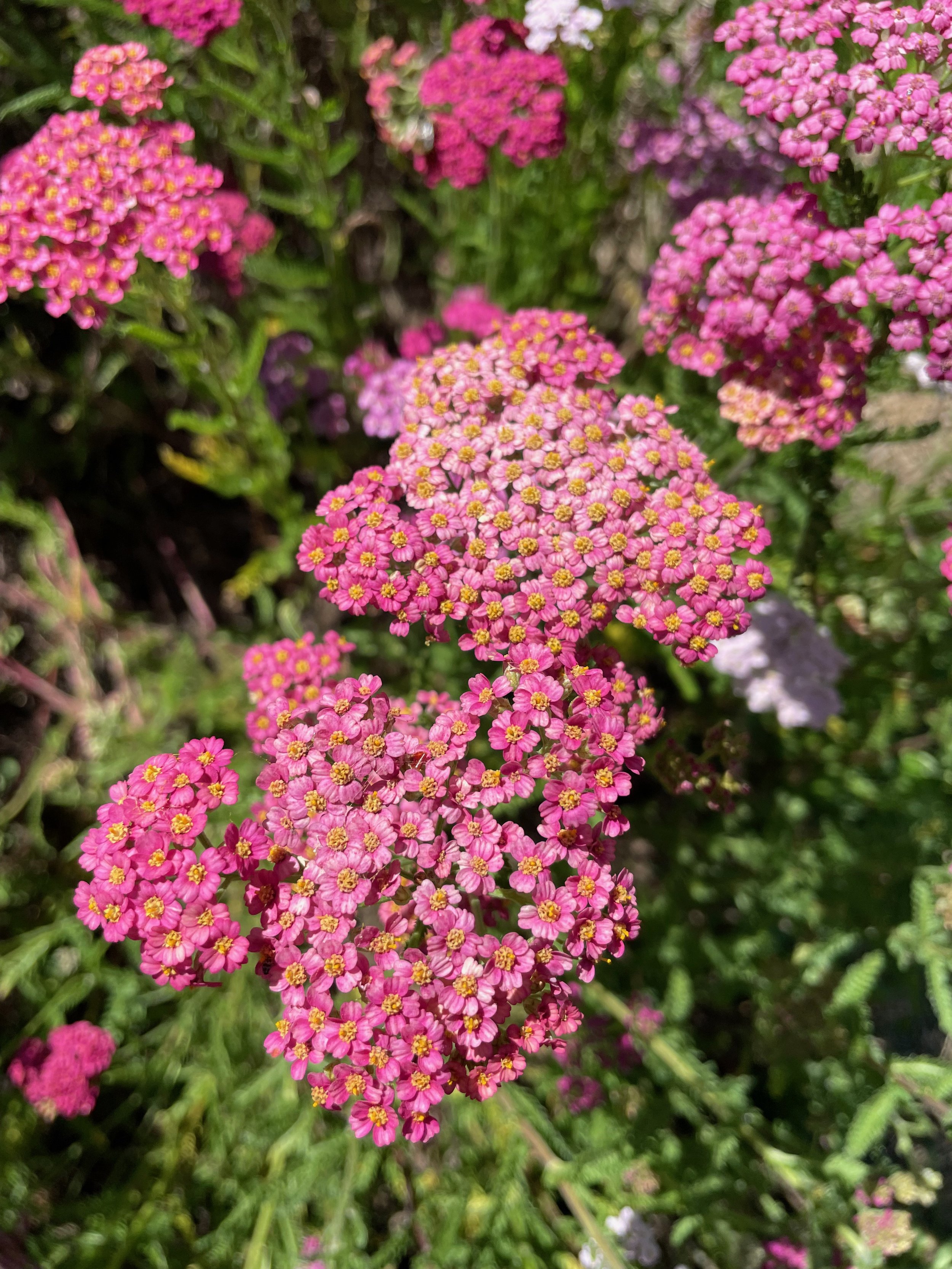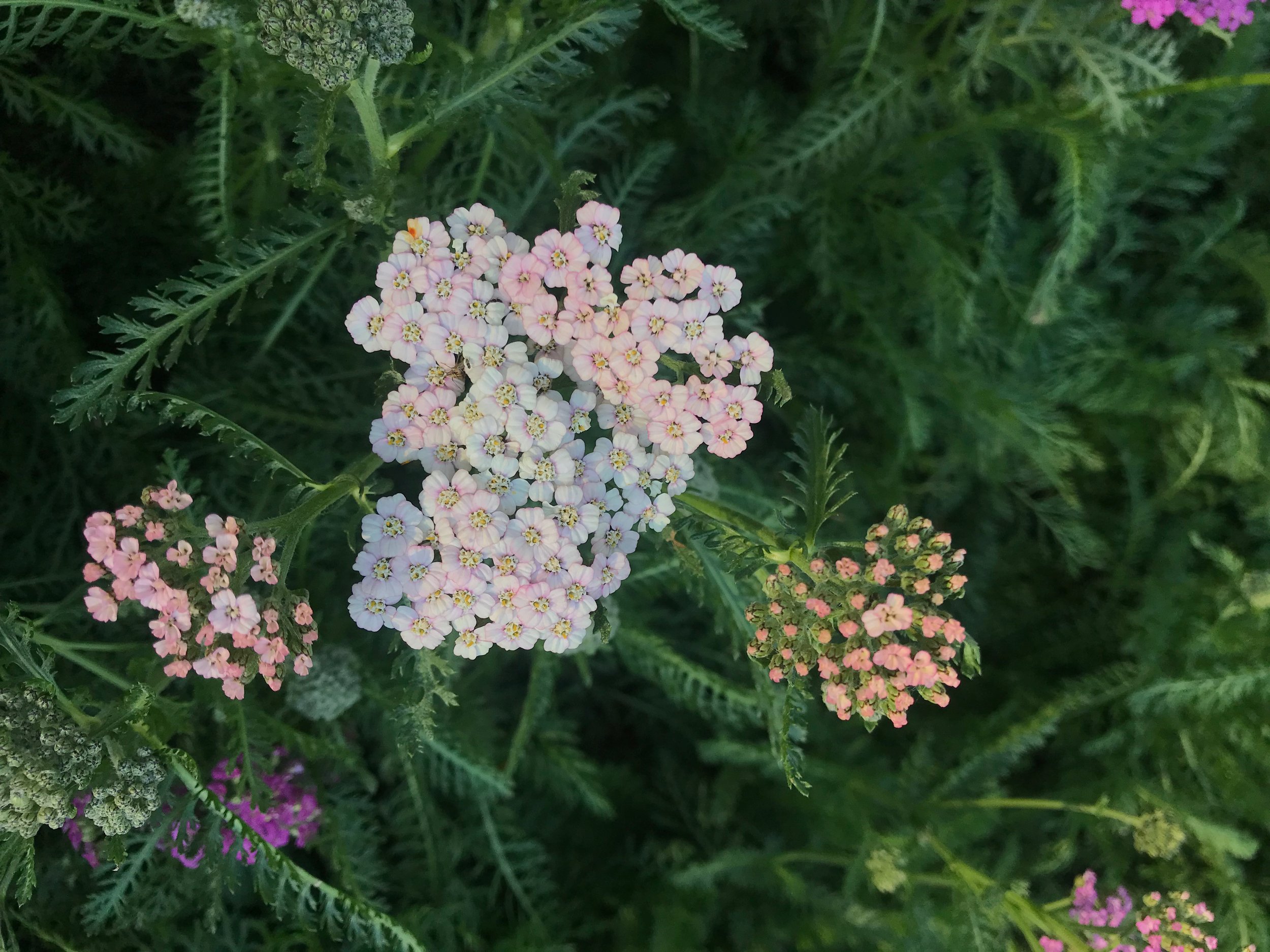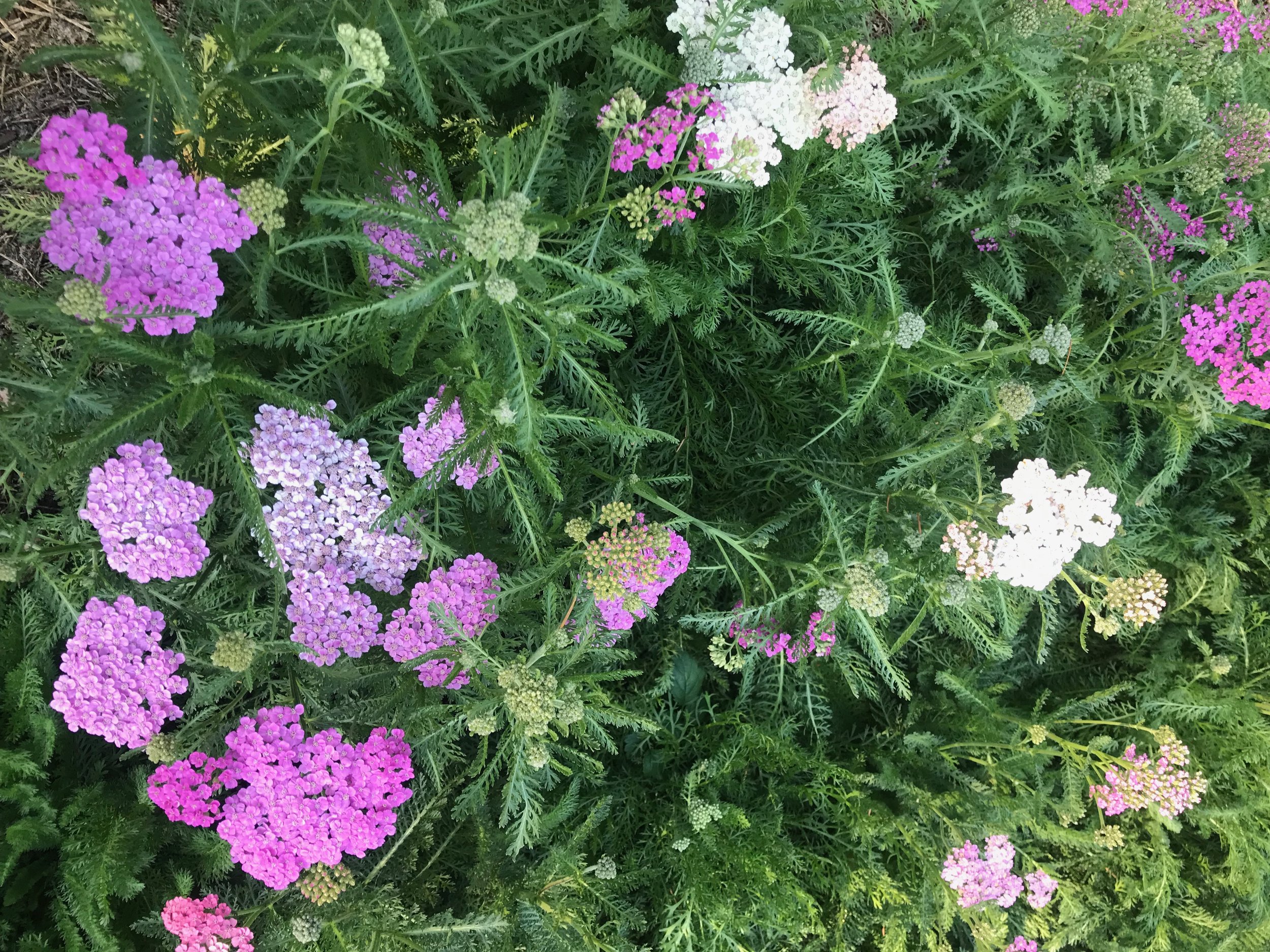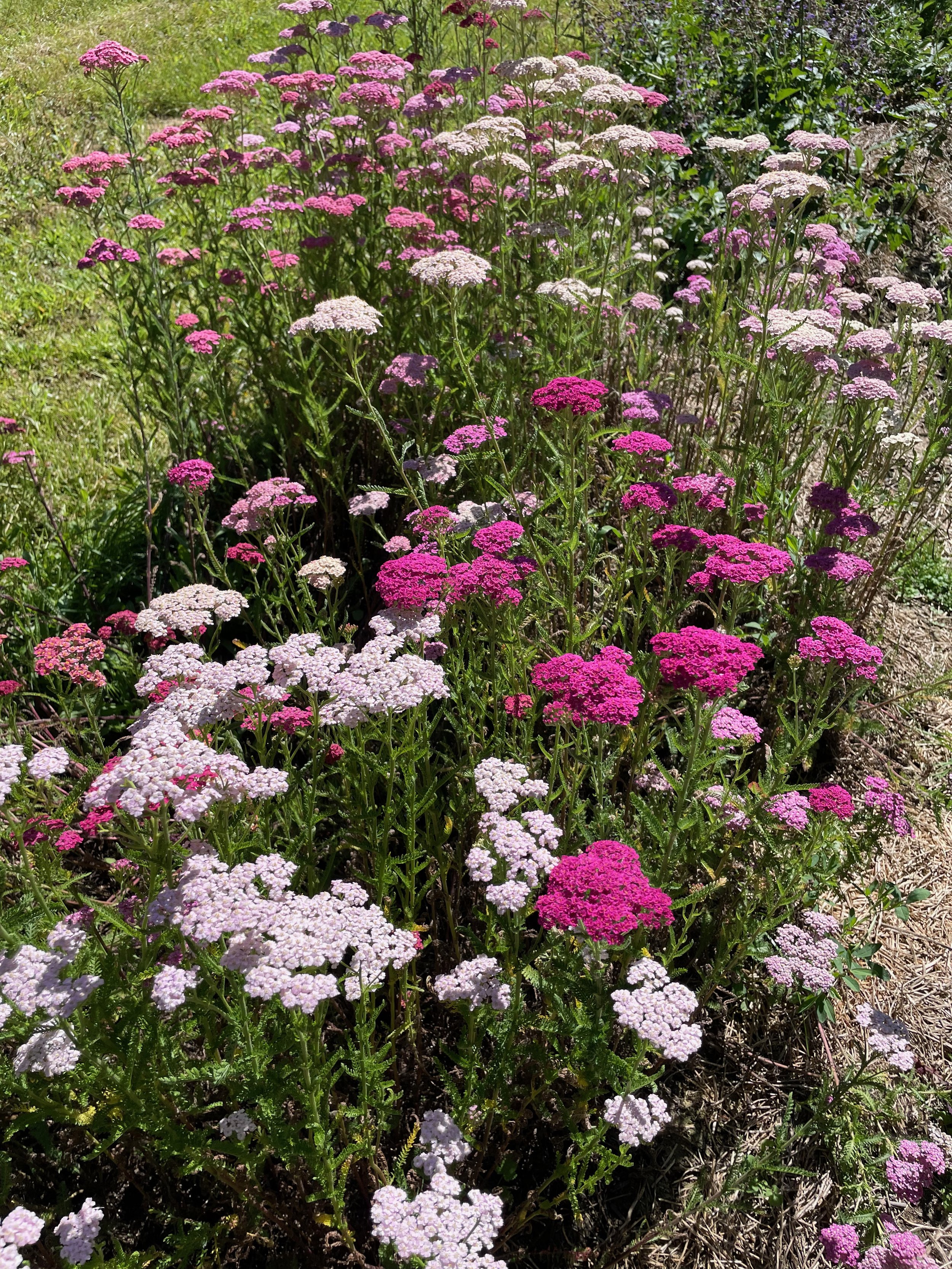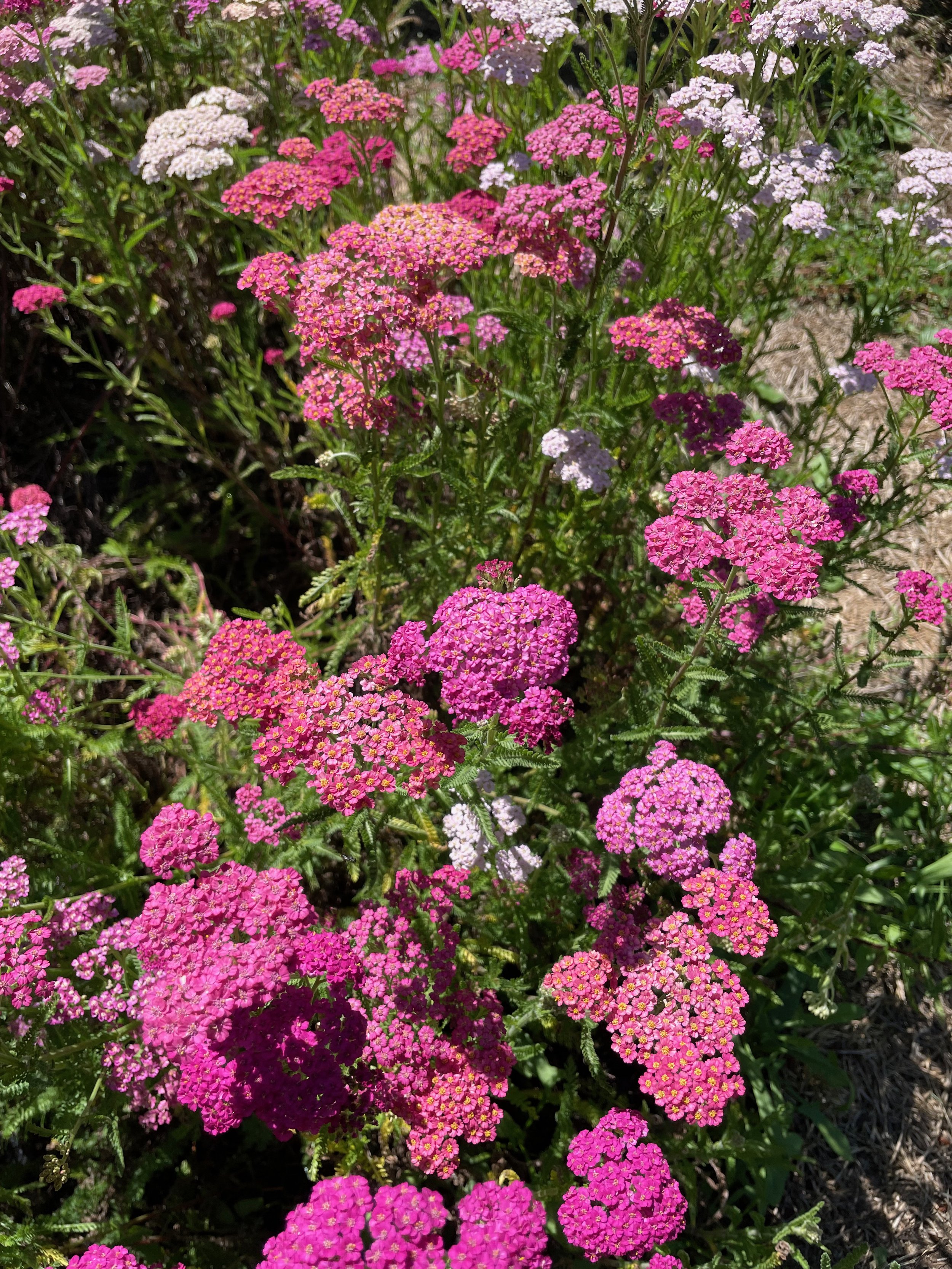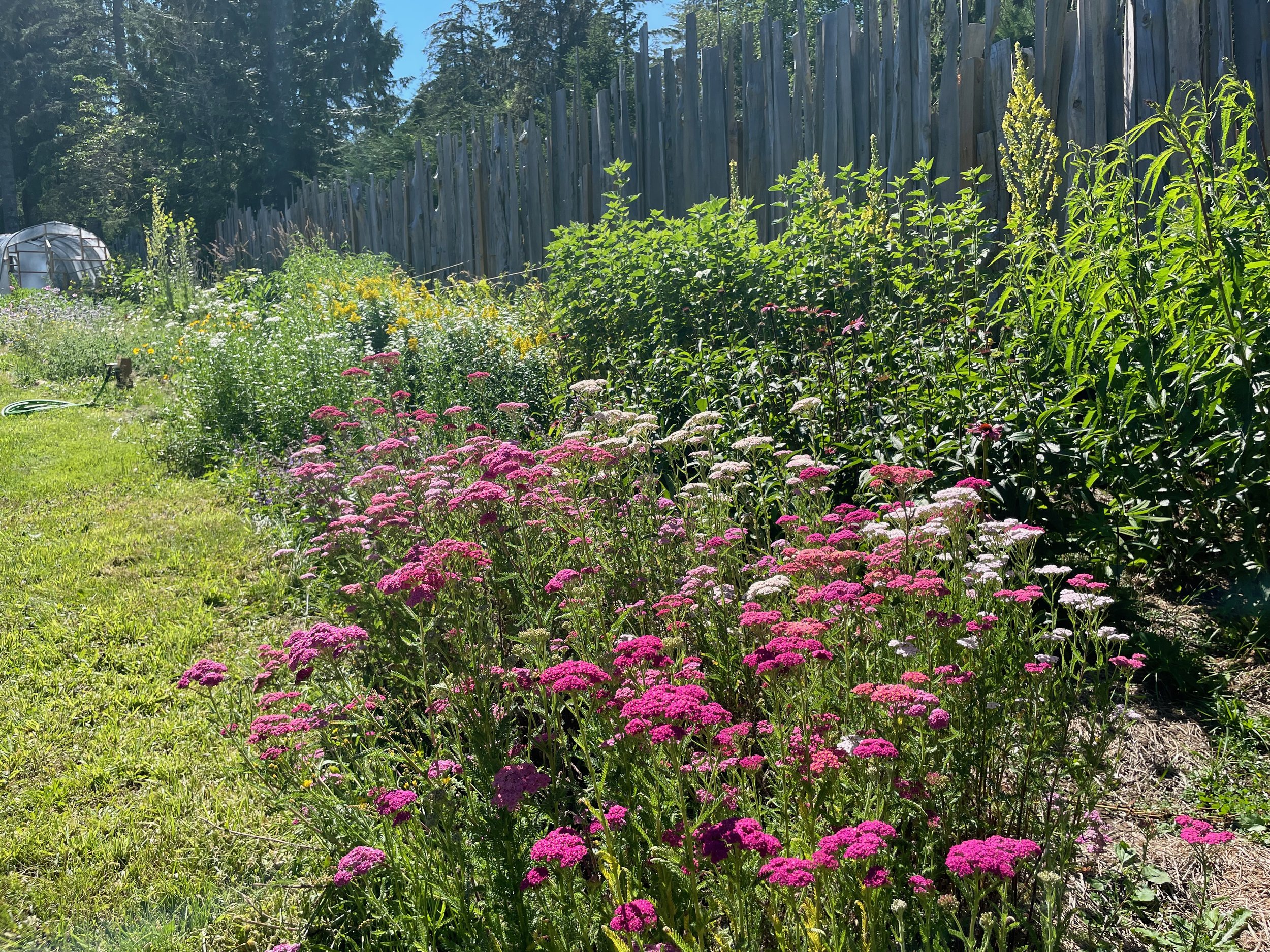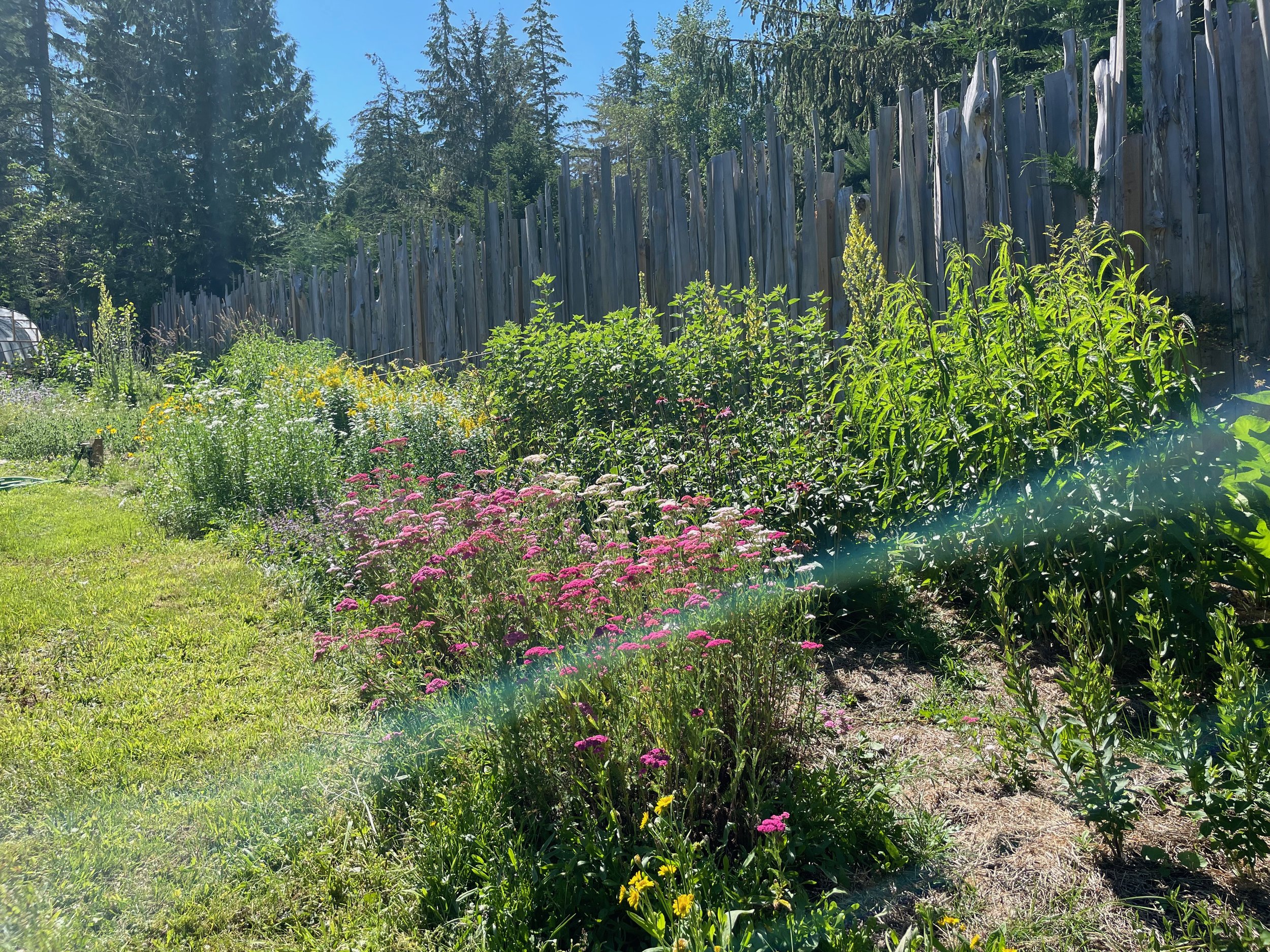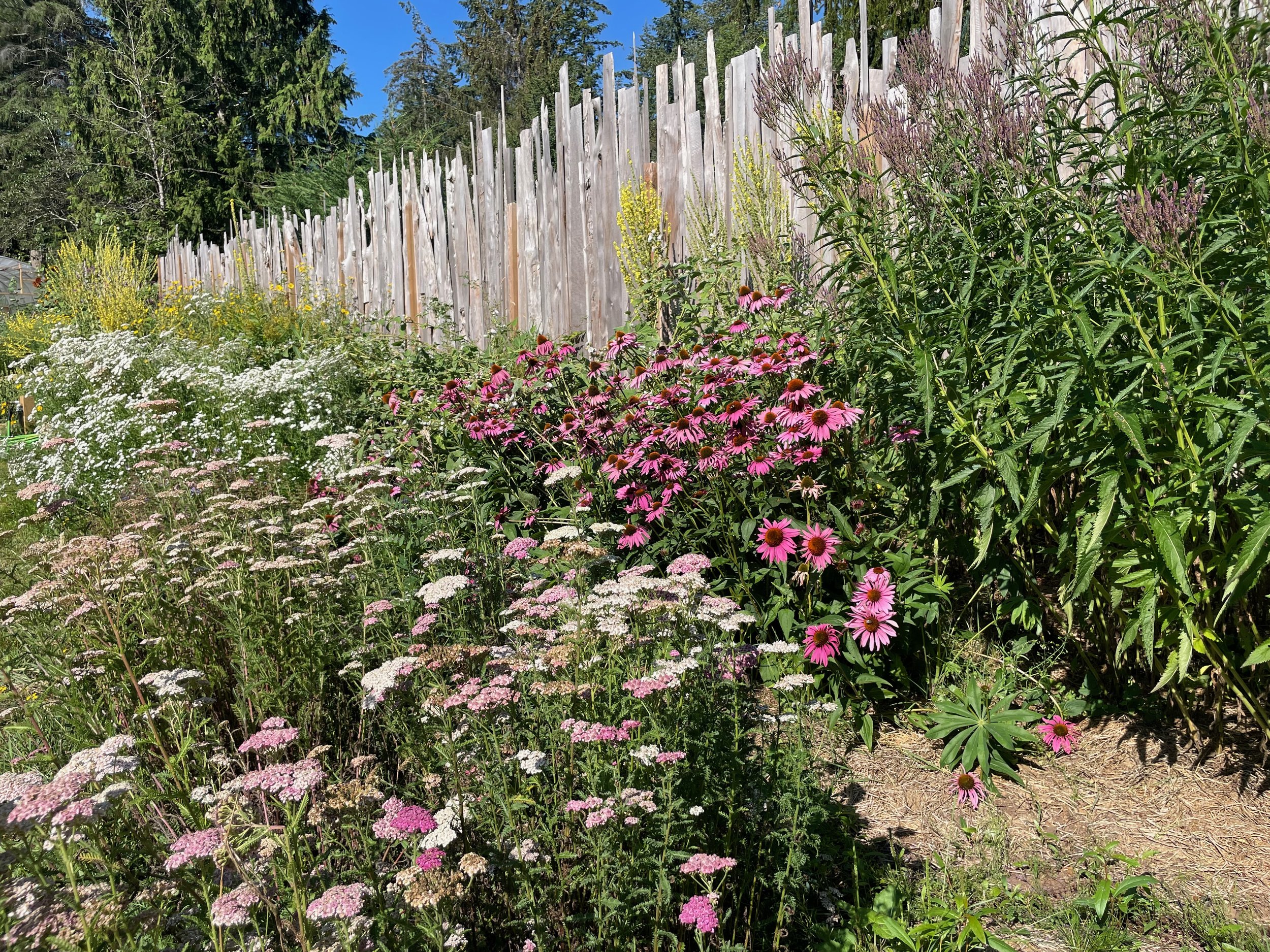Common Names
Flowerburst Yarrow, Fruitbowl Flowerburst Yarrow
Botanical Name
Achillea millefolium
Plant Family
Asteraceae (Daisy Family)
Native Range
Cultivated variety
Life Cycle
Perennial
Hardiness Zone
2-9
Habit
To 3.5ft feet tall in bloom with flat-topped umbell-like clusters of ombre flowers in antique colours ranging from dark magenta pink, cream, coral to blushing white.
Sun/Soil
Full sun, well-drained soil.
Germination/Sowing
Seeds germinate easily and can be direct sown in fall or spring, or started in flats in the spring and then transplanted out.
Growing/Care
Yarrow is one of the more adaptable herbs in the apothecary garden. In its wild habitat it can be found pretty much anywhere. I’ve seen in along shady and moist forest edges, dry sunny meadows, and all the way up in the alpine where it stays very tiny and is potently aromatic. Yarrow is best grown in full sun and in dry conditions to encourage a strong medicine.
Harvesting
This variety is milder than the common or white Yarrow but can still be used for medicine. The aerial parts can be harvested when the plants are in bloom in summer. The leaves and flowers are both used medicinally, and the woody stems discarded. Yarrow dries well, and can be also used fresh.
Culinary Uses
The leaves can be eaten in salads or as a cooking green. They are milder tasting and more palatable for this purpose in the spring when they are tender and young.
Medicinal Uses
Yarrow is the champion of all wound healing herbs. It is a powerful astringent, antimicrobial, anti-inflammatory, and pain reliever all in one. It is the one herb the ancient warriors chose to take into battle to help heal their wounds. I’ve heard of the entire plant being used for this purpose, but more commonly the dried leaves are ground and made into a fine ’wound powder’ that can staunch bleeding and prevent infection.
Yarrow can be taken internally for fevers, colds, and flus. It also helps to tone the digestive system, relieve gas and bloating, and digestive upset. It is useful to help ease menstrual cramps and heavy bleeding, or to bring on menstruation for cases of stuck menses or amenorrhea. It’s gentle nervine action also make it a useful herb for the moon time. It is also useful as a cardiovascular herb, as it helps to lower blood pressure by dilating blood vessels, and helps to improve tissue tone and function.
Yarrow contains within itself a medicine chest of value, and has been long associated with the ‘Wounded Healer’ archetype. Stories of Yarrow’s virtues can be found in Greek mythology with its ties to the great healer and oracle Chiron, and to the hero Achilles. (The latter from whom Yarrow gets its botanical name Achillea.)
Yarrow teaches us about our wounds as a right of passage, about the transformation of suffering into wisdom. When we surrender to our own suffering and trust our healing process, and let that healing change us, we can be blessed with the discovery of a deep purpose and meaning, the birth of a truer self, and a gift to help others. The wounded healer embodies a deep compassion for others, having suffered deeply themselves.
Themes
Native Plant Garden, Apothecary Garden, Alternative Lawn, Woodland Garden, Low Maintenance, Deer Resistant, Attracts Pollinators, Container Garden, Cut Flowers.
